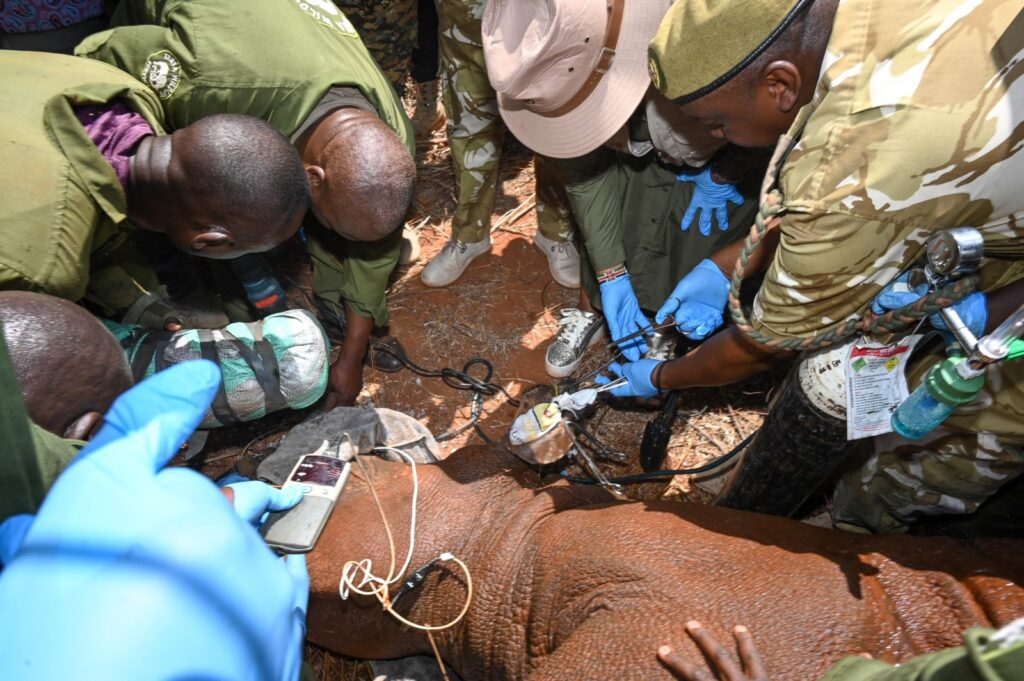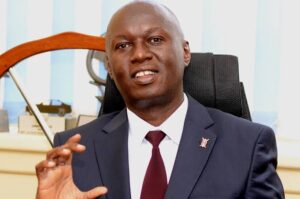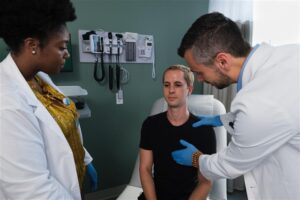Kenya’s Commitment to Rhino Conservation: Ear-Notching and Transmitter Fitting Exercise in Tsavo West

The Government of Kenya, in collaboration with its partners, has today launched a vital conservation initiative aimed at enhancing the protection of the African black rhinoceros. Cabinet Secretary for Tourism and Wildlife, Rebecca Miano, EGH, graced the occasion of the ear-notching and transmitter fitting exercise within the Tsavo West National Park’s Intensive Protection Zone (IPZ), an area recognized for its critical role in safeguarding one of the world’s most endangered species.
In her address at the event, Miano underscored Kenya’s commitment to the protection and conservation of rhinos, highlighting the ongoing efforts to combat the threats facing the species, including poaching and habitat loss. “Today marks the commencement of an exercise that will improve the monitoring and protection of this iconic species,” she said. “By fitting 20 to 25 rhinos with transmitters and marking them through ear-notching, we are ensuring that we can track and protect these magnificent animals more effectively across the vast landscapes they inhabit.”
The initiative, taking place in the heart of Tsavo West, is set to enhance the traceability of the region’s black rhinos. This particular exercise targets rhinos located in the 2,000-square-kilometer IPZ, which is home to 38 rhinos. Notably, Tsavo West National Park hosts a significant rhino population, with 178 black rhinos, 140 of which are within the Ngulia Rhino Sanctuary.
Miano also highlighted the significant strides made by Kenya’s rhino conservation efforts over the past three decades, noting that the country’s national rhino population has surged to 1,977 individuals, including both black and white rhinos. This milestone is a testament to the combined efforts of the Government of Kenya, Kenya Wildlife Service (KWS), and numerous conservation partners, who have played a pivotal role in reversing the rhino population decline.
The Cabinet Secretary acknowledged the role of key conservation partners in this process, including the Tsavo Trust, Zoological Society of London, African Wildlife Foundation, Sheldrick Wildlife Trust, and the World Wildlife Fund. She expressed her gratitude for their continued support in resource mobilization, expertise deployment, and advocacy. “Together, we have been able to achieve remarkable milestones, but our work is far from over,” Miano stated.
The KWS fraternity, led by Director-General Erustus Kanga, was also praised for their tireless efforts in rhino conservation. “I am confident that with the KWS team’s expertise and commitment, we will continue to make strides towards ensuring the survival of our rhinos and the protection of other wildlife species,” said Miano.
The exercise reflects Kenya’s broader conservation agenda, which aims to position the country as a leader in wildlife protection across Africa. Beyond rhino conservation, Kenya continues to prioritize biodiversity, climate action through protected ecosystems, and the creation of sustainable livelihoods for communities living alongside wildlife.
Miano also took the opportunity to appeal to the media to amplify Kenya’s conservation message on the global stage. “Your role in sharing these successes is critical. We want the world to know about Kenya’s efforts to secure our wildlife heritage for future generations,” she said.
With the ongoing support of various stakeholders, Kenya remains steadfast in its mission to protect endangered species and to foster a future where both wildlife and human communities thrive together.





